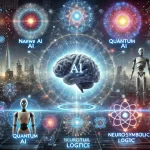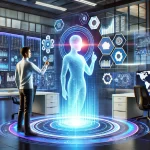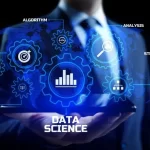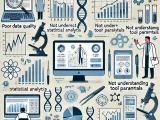
The Transformative Power of Generative AI in Biomedical Science
July 9, 2025In the rapidly evolving landscape of technology, few innovations have sparked as much curiosity and debate as generative artificial intelligence (AI). While much of the public conversation has focused on AI’s role in generating text, images, or code, there’s a quieter, yet far more profound revolution taking place—one that is poised to reshape the very foundation of biological science.
Generative AI is no longer just an impressive tool for creative tasks. It is becoming an integral part of how we understand, manipulate, and even design life itself. In laboratories around the globe, researchers are now using advanced machine learning models not only to interpret biological data but to envision new possibilities in fields like synthetic biology, genetic engineering, and personalized medicine. The impact is already tangible—and the potential is extraordinary.
Rethinking Biology Through Synthetic Design
For centuries, biology has largely been a descriptive science. We observed living systems, catalogued them, and attempted to understand their complexities. However, with the advent of generative AI, we are transitioning into a new phase where biology becomes more predictive and constructive. Rather than just studying existing life forms, scientists can now design and simulate entirely new biological systems.
This is the promise of synthetic biology, a field that merges biology with engineering. Using generative models, researchers can design synthetic DNA sequences, engineer cells with new capabilities, and create proteins that don’t exist in nature. AI doesn’t just speed up this process—it opens up entirely new avenues. It helps predict how a modified gene might behave in a real biological system or how a novel protein structure could fold and function. The implications are vast, ranging from sustainable biofuels to programmable organisms that detect and neutralize toxins in the environment.
Programmable Genomes and the Rise of Precision Editing
Gene editing has already made major headlines thanks to technologies like CRISPR-Cas9. But as powerful as these tools are, they rely heavily on human-guided trial and error. With the complexity of genomes—billions of base pairs interacting in intricate ways—it becomes nearly impossible for humans alone to predict the cascading effects of multiple genetic changes.
This is where generative AI steps in. It can model how genes interact, simulate the effects of mutations, and suggest optimal edits with minimal unintended consequences. In effect, it allows us to write and rewrite genetic code with a level of foresight that was previously unthinkable.
The concept of a programmable genome is becoming real—not just editing one gene to fix a disorder, but reprogramming networks of genes to confer entirely new traits. This could revolutionize agriculture, environmental management, and, most critically, human health.
Unlocking the Potential of Gene Therapies
Gene therapy has long held the promise of treating or even curing genetic diseases by fixing their root causes. Yet, progress has been slow, partly due to the complex nature of gene delivery and expression. Generative AI is now accelerating the development of custom vectors, predicting the safest and most efficient ways to deliver genetic material into specific tissues.
Moreover, these models are not limited by human intuition. They can analyze millions of possible genetic configurations and predict which ones are most likely to succeed in real-world conditions. This reduces the time from conceptual therapy to clinical trial dramatically and improves safety by minimizing off-target effects.
In a field where a single mistake can have severe consequences, the precision offered by AI-guided models is invaluable.
AI as a Scientific Collaborator
What’s most revolutionary is that generative AI is moving beyond being a mere tool. It’s becoming a collaborator in the scientific process. It doesn’t just execute commands; it generates hypotheses, identifies overlooked patterns, and even challenges assumptions. In large genomic datasets, it can highlight relationships that a human researcher might miss entirely. In experimental design, it can suggest efficient pathways to test ideas, reducing resource waste.
This collaboration has the potential to democratize innovation in biology. Researchers without access to vast experimental resources can now use AI to model, test, and validate ideas digitally before heading into the lab. The cost of innovation decreases, and the speed increases.
Ethical Considerations and Future Directions
Of course, with such power comes responsibility. The ability to design life, edit genomes, or create synthetic organisms raises profound ethical questions. Who gets to decide what constitutes an acceptable modification? How do we ensure safety in an era where genes can be edited with increasing ease? These questions demand careful, ongoing dialogue among scientists, policymakers, and the public.
That said, the trajectory is clear. Generative AI is not just enhancing biology—it is expanding its frontier. We are moving from a science that studied life to one that shapes it. The implications for medicine, sustainability, and human health are monumental.
Conclusion
While the spotlight often shines on AI-generated art or conversational chatbots, the real revolution may be happening behind the scenes—in the petri dishes, genome maps, and protein structures being reimagined with the help of AI. Generative models are transforming biology from a descriptive discipline into a predictive, constructive one. And in doing so, they’re helping scientists ask deeper questions, make bolder predictions, and craft solutions to some of humanity’s most pressing problems.
In the coming decade, we may look back at this moment not just as the rise of generative AI, but as the birth of a new kind of biology—one co-authored by machine intelligence and human insight.

















